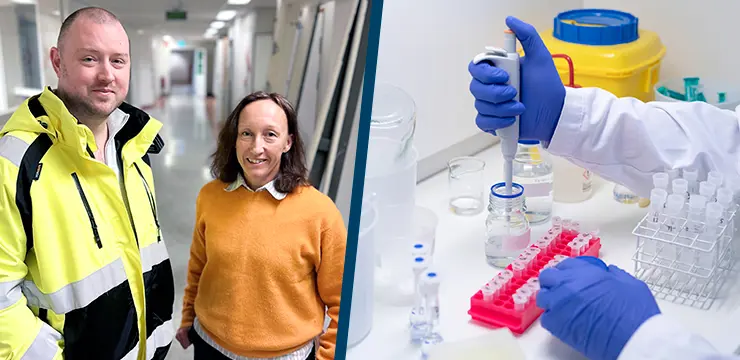Skåne University Hospital prepares for manufacturing of advanced therapy medicinal products

Preparations and renovations are underway at the ATMP centre in Lund, ultimately aiming to produce ATMP drugs for use in clinical trials. Presently, ATMP treatments are already underway at Skåne University Hospital for certain forms of blood cancer.
"At the moment, ATMP is mainly used against cancer and certain neurological diseases. But this is just a preview of what we will see in the future. It is likely that we will be able to treat major public health issues like diabetes in the long run," says Gisela Helenius, Head of the ATMP centre at Skåne University Hospital.
Faster delivery to patients
Currently, ATMPs are manufactured by pharmaceutical companies elsewhere in the world. In practice, this means that cells from a patient undergoing ATMP treatment are extracted at the hospital in Lund, frozen, and then sent to another country. After the cells are treated there, they are sent back to the patient in Sweden – a process that usually takes six to eight weeks.
"The fact that we will soon start manufacturing our own ATMPs means that we will be able to treat patients faster, possibly within just one week. This can save the lives of patients with aggressive disease progression," says Gisela Helenius.
Close collaboration with academia and industry
Another crucial reason for manufacturing in Lund is that it facilitates and strengthens academic research. The ATMP centre at Skåne University Hospital collaborates closely with its counterpart at Lund University. By having drug manufacturing on the hospital campus, clinical trials can begin faster.
"Before the medicines can be used in studies with patients, it needs to be ensured that they meet Good Manufacturing Practice (GMP) standards. This is done within the framework of Lund University's preGMP facility. It is beneficial that there is then a short step to clinical trials at the hospital," says Stefan Jovinge, Head of research at Skåne University Hospital.
The development of ATMPs will also be done in collaboration with drug manufacturers and biotechnology companies. The collaboration extends to other university hospitals in Europe, including Leiden University Medical Centre in the Netherlands, with which there is already an agreement.
High standards for the facilities
For the manufacturing to become a reality, the premises in Lund need extensive changes. The premises and the cleanrooms being built in them must meet specific requirements regarding airflows and the number of particles in the air.
"It is a complex construction process that requires almost millimetre precision, especially since we are renovating existing premises with other activities both below and above us," says Daniel Ollermark, project manager from Regionfastigheter – Region Skåne’s real estate organisation.
Completion by the end of 2024/25
The goal is to complete the construction in a year. At that time, Gisela Helenius hopes that all permits will be ready to start manufacturing the medicines. The regulations for ATMPs are more comprehensive than traditional medicines due to the complexity of manufacturing.
"Reaching this point in development is, of course, incredibly exciting. But above all, it is important for the patients," says Gisela Helenius.
Facts: Advanced therapy medicinal products
- Advanced therapy medicinal products, abbreviated as ATMPs, are biological drugs based on cells, tissues, and genes. ATMP can treat diseases in entirely new ways.
- Treatment with ATMPs may involve a one-time treatment with the expectation of a lasting effect, a kind of repair.
- In other cases, they can create opportunities for long-term survival for certain cancer patients where all other treatment options have been exhausted.
- It may also involve treatment options for patients with hereditary diseases where effective treatment alternatives are currently lacking.
Source: ATMP Sweden

